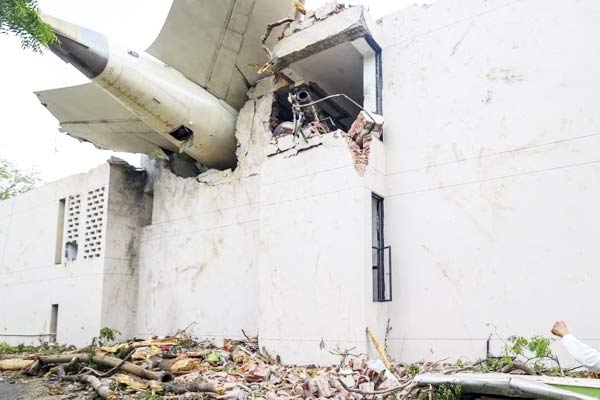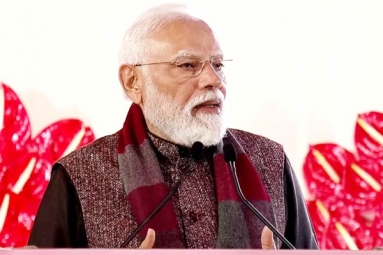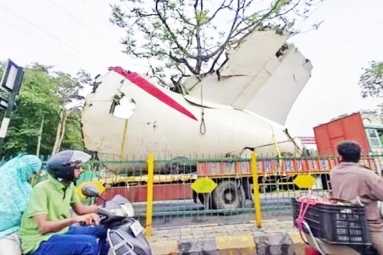
(Image source from: Cnbctv18.com)
The first update about the probe into the Air India Dreamliner accident in Ahmedabad on June 12 has come out, and a key detail backs up what people thought: both plane engines stopped working soon after it took off. The report from the Aircraft Accident Investigation Bureau about the Boeing Dreamliner 787-8 event, which caused at least 270 deaths, counting 241 of the 242 people on the plane, showed that the fuel cutoff switches, which control how fuel goes to the engines, went from ‘RUN’ to ‘CUTOFF’ very close together, in just one second. It's important that the cockpit recording caught one pilot saying, “Why did you cut off?” and the other pilot replied, “I didn’t.” The movement of the switches to ‘CUTOFF’, which stopped fuel from going to the engines, will be a very important part of the ongoing investigation.
The report, which was released after 1 am on Saturday, says that videos of the event show the Ram Air Turbine (RAT) turning on, which means the plane lost all power. “The airport CCTV video showed the RAT coming out as the plane climbed right after take-off. No big birds were seen near where the plane flew. The plane started to lose height before it passed the airport fence,” the report says. Information from the Enhanced Airborne Flight Recorder (EAFR), often called the black box, showed that both switches were moved back to the ‘RUN’ spot, and while Engine 1 seemed to get better, Engine 2 did not. “The core slowing of Engine 1 stopped, turned around, and began to get better. Engine 2 did start again but couldn't keep its core speed from dropping, and it kept adding fuel to try to raise its core speed and get better,” the AAIB said in the report.
The plane was only in the air for 32 seconds, and the report says it went just 0.9 nautical miles before crashing into the BJ Medical College Hostel near the airport. The crash happened at 1:39 pm. The report points out that, even though the thrust levers were found close to the idle spot, the black box data showed those levers were forward until the crash. Both fuel control switches were also in the ‘RUN’ spot. To clear up a big area of doubt, the report said that the flap setting (at five degrees) and the landing gear lever spot (DOWN) were right for take-off. Another key thing the AAIB found is that there is no clear proof of sabotage. The investigating group said that the Federal Aviation Authority had sent out a warning in 2018 about the fuel control switches.
The FAA put out Special Airworthiness Information Bulletin (SAIB) No. NM-18-33 on December 17, 2018, talking about a possible problem where the fuel control switch locking part might not work. This announcement was made because people using Model 737 airplanes said the fuel control switches were installed without the locking part working. The report said that this plane safety problem wasn't thought to be a big danger that needed an airworthiness directive (AD) from the FAA. Air India didn't do the checks, but these checks weren't a must. Air India said they didn't do the suggested checks because the SAIB was just a suggestion and not something they had to do. Looking at the repair papers, it showed that the throttle control module was swapped out on VT-ANB in 2019 and again in 2023. But, the reason for this swap wasn't related to the fuel control switch. Since 2023, there haven't been any reported problems with the fuel control switch on VT-ANB.
The report said that the weather was fine when the crash took place. The sky was clear, you could see far, and the wind wasn't very strong. The pilots were healthy, had rested well, and had plenty of experience flying that kind of aircraft.











